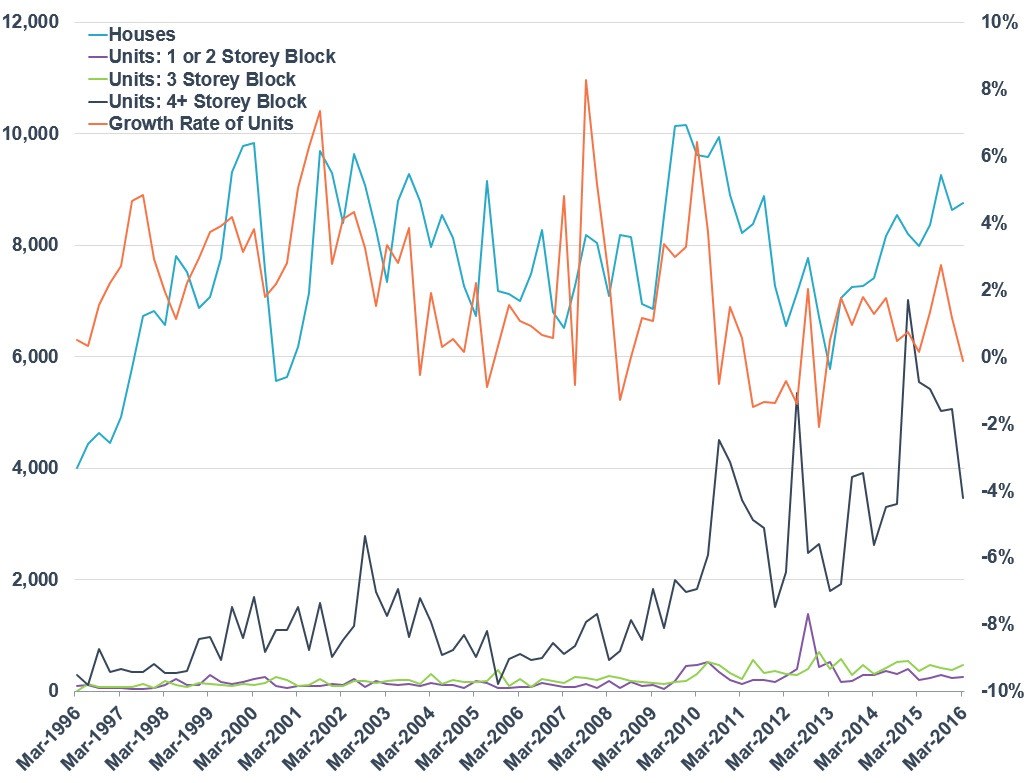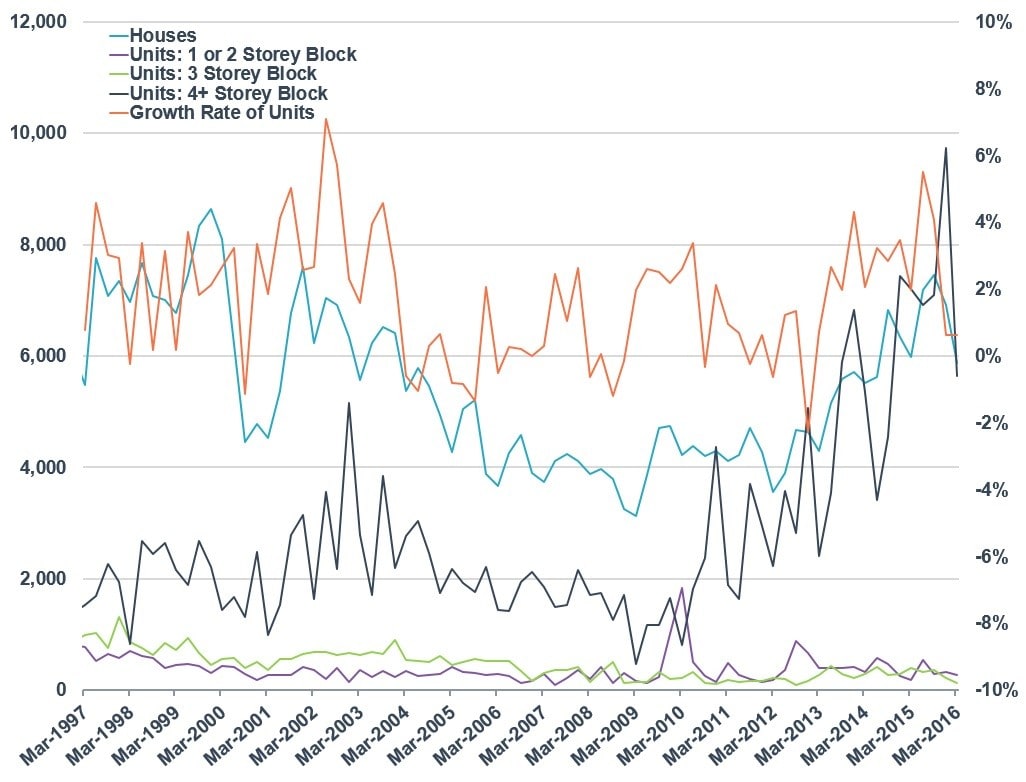Oversupply fears rise as LVRs drop: Eliza Owen

GUEST OBSERVER
News of Macquarie Bank tightening its loan to value ratio (LVR) for apartment high-rises has sparked fears of an oversupply in certain markets.
The bank named 46 postcodes where high-rise apartment lending would shrink to 70 percent of the value of the property.
The problem in these postcodes – which are concentrated in inner Sydney, Melbourne and Brisbane – is not one of supply and demand, at least not in the sense that there are more apartments than there are people to live in them. Supply and demand in these markets is not a question of how many people need a place to live versus how many places there are to live. Rather it is how many owner-occupiers and investors demand assets.
The former conception of supply and demand ignores the tax and finance incentives that encourage people to hold more property than they need to live in. These incentives include cash-free equity deposits, negative gearing and capital gains concessions, which have been introduced one by one into the housing market over the last 30 years. It makes sense then, that our understanding of supply and demand in real estate should be dynamic. As long as there is an investor looking for a property to put their money in, there is demand. As long as there is an investor demanding property, a developer is willing to supply.
Professor Laurence Murphy of the University of Auckland notes that when the price of property begins to fall, developers become less willing to supply dwellings. Graph 1 and 2 compares high-rise approval data in Victoria and NSW (which we have to assume is a proxy for inner city unit development) with quarterly growth rates in their respective unit markets.
Graph 1: Quarterly Approval Figures Victoria vs. Melbourne Units Quarterly Growth Rates

Source: Residex
Graph 2: Quarterly Approval Figures NSW vs. Sydney Units Quarterly Growth Rates
Source: Residex
The graphs show that approvals are highly responsive to changes in unit growth rates.
As demand for units falls away due to tighter LVRs, slowed wage growth and higher premiums on foreign investment purchases[1], the first thing to crash will most likely be applications and construction of dwellings. This has wider economic implications, particularly for NSW and VIC, where construction has been a significant contributor to growth in gross state product.
The construction of units – whether in the application phase, construction phase or completion phase – moves in much larger fluctuations than the values of the units themselves. For example, in the September quarter of 2010, the number of approvals for units in blocks of four or more stories grew by 124% in NSW, yet nothing dramatic happened with Sydney unit value growth. Values grew steadily until 2013 when they began to grow at a higher rate. I am not saying that the supply of units to speculative investors is sustainable where population growth is low, nor is it optimal for the people living in them. However, it is clear that price movements and investor interest in units are a better indicator of expected supply movements than population growth rates.
The graphs also show the approval figures for other dwelling types over the past decade. Most strikingly, the number of high-rise units began outperforming detached housing approvals from March 2011. The salience of this phenomenon increased around the beginning of the 2013 housing boom.
Less important than the effect of supply on the value of a unit is the way units are supplied and how they are integrated with wider planning. Residential dwellings crowding out commercial and cultural facilities, which are partly what makes a city desirable in the first place, can limit a city’s desirability. A lack of diverse planning can also increase pressure on transport and road congestion. This is one of the many risks of investing in rapid high-rise growth areas, and has caused some young families and retirees to move to regional parts of the state.
Eliza Owen is housing market analyst for Onthehouse.com.au and can be contacted here.
